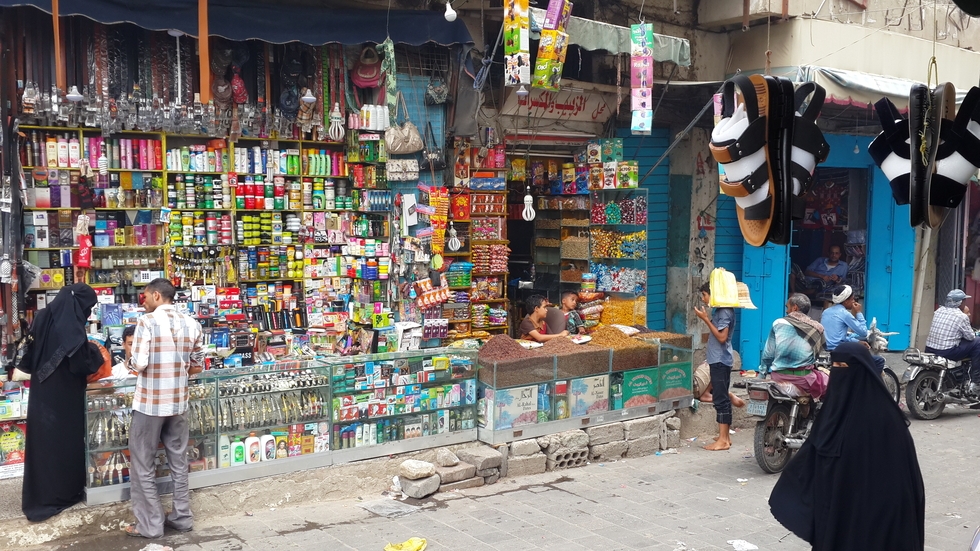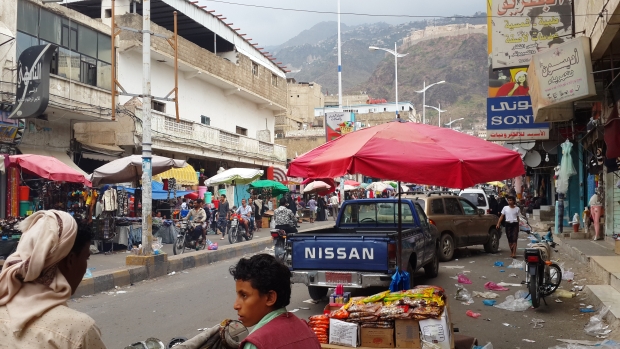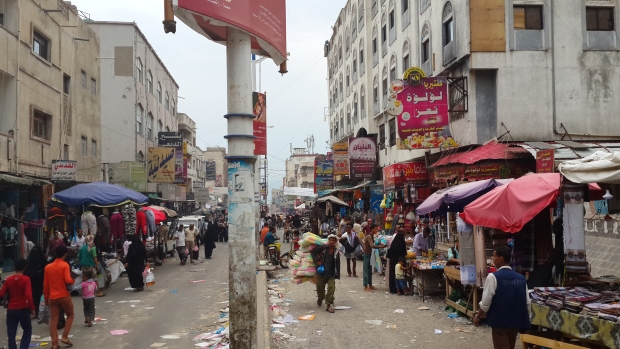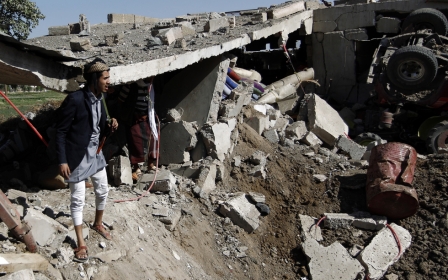Painting cars and listening for bombs: Eid in Yemen's Taiz

Taiz, Yemen - Over a year after fleeing conflict and siege in the embattled town of Taiz, thousands of Yemenis are now returning home – in time to celebrate the festival of Eid.
But, despite the partial lifting siege in the southern town, those returning have found the run-up to celebrations on Saturday punctuated by the sounds of shelling and missile attacks.
Adeeb Abdulbaset, a father of three, is one of the thousands returning to his shattered hometown in time for the biggest celebration of the Islamic year.
“When we left the city last June, we expected the fighting to last no longer than a few months,” he told Middle East Eye.
But more than a year later he and his family found themselves still living in an refugee camp some 70km outside Taiz, all five sharing a single room.
New MEE newsletter: Jerusalem Dispatch
Sign up to get the latest insights and analysis on Israel-Palestine, alongside Turkey Unpacked and other MEE newsletters
Driven by poor conditions at the Taiz al-Shamaytin camp, Abdulbaset and his family returned home – but to a district still regularly targeted by Houthi forces.
The family's home is in Osaifrah, an area controlled by the Popular Resistance, the anti-Houthi force whose campaign is backed by a fierce campaign of Saudi-led air strikes that have pounded Yemen since March 2015.
Abdulbaset said that, despite the dangers still present in Taiz, the time had come to return.
“It seems the war will not end soon, and we can't bear to stay at the camp any longer,” he said.
But something else also drew Abdulbaset back to Taiz – the Eid celebrations represented a good business opportunity.
Abdulbaset repaints cars, and is hoping that the streets of Taiz, deserted during last year's celebrations, will this time be buzzing with potential customers looking to buy food, new clothes and a fresh lick of paint to get their vehicles ready for the coming round of weddings.
“Most displaced people have returned to the heart of the city now, and normal life is starting to return.
“People will be decorating their cars for the Eid wedding season.”
'The children know the sounds of different weaponry'
The normal life that is returning in Taiz, though, is still one punctuated by violence and hardship.
Seventeen months of war have killed more than 10,000 people across Yemen, most of them civilians. In Taiz itself, the same number have been injured.
Though thousands of people have returned to Taiz since the Popular Resistance seized the main road into the town from the Houthis on 22 August, the local Humanitarian Relief Coalition (HRC) said this week that clashes are ongoing on several fronts within Taiz.
As displaced people return to the city, ongoing violence – which HRC says saw 165 people killed by shells and sniper fire around the province of which Taiz is capital in August – has caused a new flow of refugees going in the other direction.
For those who do go back to the city, said HRC head Abdul Kareem Shamsan, electricity, water and basic sanitation services are still not up and running.
“Although the siege on the city was broken, most basic health services are also still not available in Taiz,” Shamsan told MEE.
“We cannot say that Taiz is now safe – displaced people just failed to find sufficient services in the camps, so they returned to houses in the middle of war.”
Hisham al-Maqtari returned to his home in Taiz's Jamal Street late last month with his family of five after more than a year of displacement. Less than two weeks after their return, Maqtari's family woke in the middle of the night to the sound of two Katyusha missiles pounding the street. Nobody was injured in the attack.
“When we first arrived back to Jamal Street the children didn't sleep all night,” Maqtari told MEE.
“But now they have adapted to the noise of the shelling and explosions, and they can even distinguish between different types [of weaponry].
"We hear the clashes all day, but people are still walking in the streets as normal.”
Trade returns to Taiz
With the streets of Taiz once again filled not just with rocket debris but also with civilian residents, keen shoppers are taking advantage of falling prices to stock up on goods for the Eid celebrations.
Abdullah al-Ariqi, a local trader, told MEE that the prices of staple goods fell by more than half after the reopening of the main roads into Taiz.
“Before the siege was broken we had to bring goods through the mountains, which added a lot in transport costs,” Ariqi said.
“But now we can drive straight from Aden on the main road.”
Many will be hoping to make it back in time to celebrate Eid in Taiz for the first time in years, despite the ongoing danger. Local driver Fahmi Haroon told MEE that his van carries displaced people returning to the city every day.
“The main road into Taiz is safe now, so many people are coming back,” he said. “Even if the city is still not safe enough for civilians, they prefer their houses to the camps.”
Abdulbaset, the car-painter, agreed.
“Shells are still falling on civilian areas of the city - usually they fall at night, so they do not kill people.
“But even if the shelling targets my house, I will not leave my house again - I can't bear to live in a camp any more."
Middle East Eye delivers independent and unrivalled coverage and analysis of the Middle East, North Africa and beyond. To learn more about republishing this content and the associated fees, please fill out this form. More about MEE can be found here.






